The Last Two L-Shaped Streets in Manhattan
When driving in Manhattan, I love taking a random turn and finding myself on a curved street.
While commonplace pretty much anywhere else, crooked streets are incredibly rare in Manhattan. There are certainly avenues and streets with gradual curves, but when it comes to sharp angles – the kind that require you to really twist the wheel while still mid-block – there are very few, all dating back to a pre-grid New York.
But the rarest of the rare are L-shaped streets – streets with 90° turns that leave you on the same street you started on (as opposed to the intersection of two different streets). How rare? As far as I can tell, there are only two public L-shaped streets left in Manhattan.
MARKETFIELD STREET
The diminutive Martketfield Street can be found off of Broad Street, nestled between two stately buildings:
The slim byway extends about half a block in…
…then hangs a sharp right to connect with Beaver Street:
Marketfield Street dates back to the 1650s, when today’s Bowling Green was home to a livestock market called the Marckvelt. Originally known by the Dutch Marckvelt Steegh (“market field path”), it was later anglicized to its current name. According to legend, it was also known for a period as Petticoat Lane, in reference to either its clothing stores or prostitution.
In 1880, the NY Produce Exchange purchased the eastern end of the street from the city for the construction of its new headquarters, and Marketfield was given its unusual angle.
Though the south side is pretty bland, the north side is as archetypal a New York alley as you can find, complete with crumbling, grime-covered brick, fire escapes, ducts…
…and my favorite, ancient, rusting shutters:
One of the most unusual structures is this facade, which features a surprising amount of detailing for a dank back alley:
Its main facade is located at 18 Beaver Street, and the contrast between the two is pretty amazing:
According to New York – A Guide To The Metropolis, 18 Beaver Street dates to the 1880s and was most likely a fancy restaurant, or “dining saloon.”
COMMERCE STREET
Moving further north to the West Village, the Commerce Street “L” begins on Bedford Street…
…then makes a sharp 90° turn onto Barrow Street:
The bend in Commerce, along with several parallel streets, follows the property line of Dutch Governor Wouter Van Twiller’s farm, dating to the 1630s. Originally, Commerce was a dead-end, though nearly connecting with the now defunct Barrow Street (today’s Barrow was then known as Burrow’s).
You can still see the remains of the original Barrow Street in the passage between buildings off of Hudson Street:
As the West Village began to take on the layout we’d recognize today, Commerce Street became a lonely dead-end…
…then was finally given it’s distinctive bend into modern Barrow Street at some point in the early 1800s:
No one is 100% sure how Commerce Street got its name, though the most common story has it that it refers to the sudden increase in Village businesses following a yellow fever outbreak in downtown Manhattan.
In particular, I’ve always loved the two buildings that meet right at the turn, which date to the mid-1800s. The one on the right, #48, was built for one Alexander Stewart, who owned a department store at Broadway and Chambers.
The curved staircase to the upper door seems very appropriate for the street.
Also on the block is the Cherry Lane Theater. Originally built as a brewery in 1836, it became a theater in the 1920s (if you’ve heard that Commerce Street was once known as Cherry Lane, it’s a myth, perpetrated by one of the theater’s founders).
And that’s it for L-shaped streets! Yes, New York has several L-shaped intersections – where two differently named streets meet at a 90° angle (for example, Hamilton Terrace and W 144th Street). But for public streets in the grid (i.e. not on developments or parks), Marketfield and Commerce are the only two that fit the definition.
That’s not to take away from the beauty of unusually angled byways like Gay Street, Minetta Street, and Doyers Street though! Look for more crooked articles coming soon!
-SCOUT

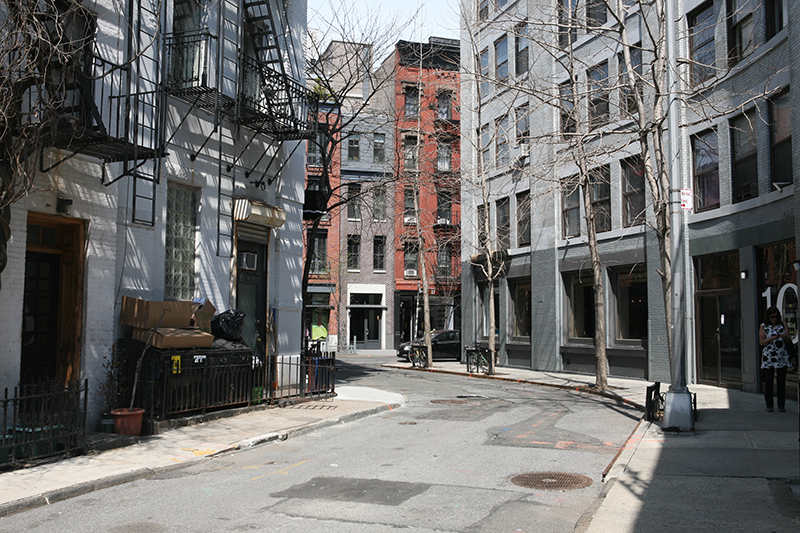


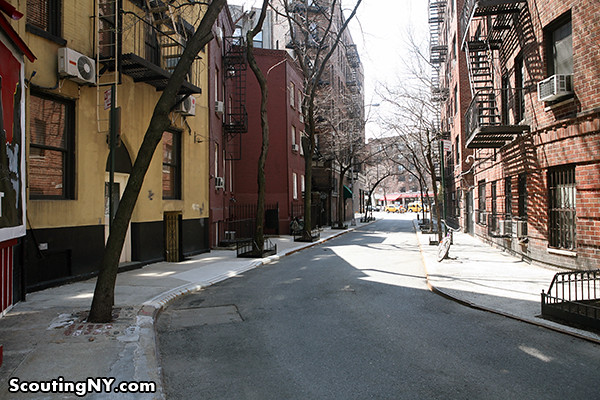
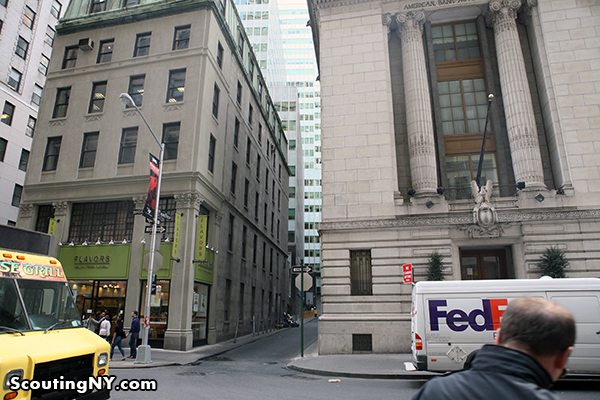
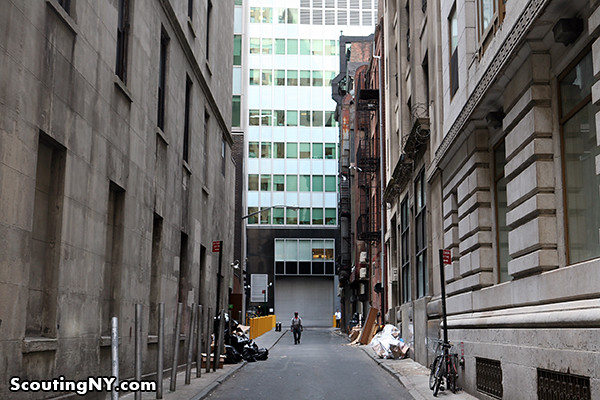
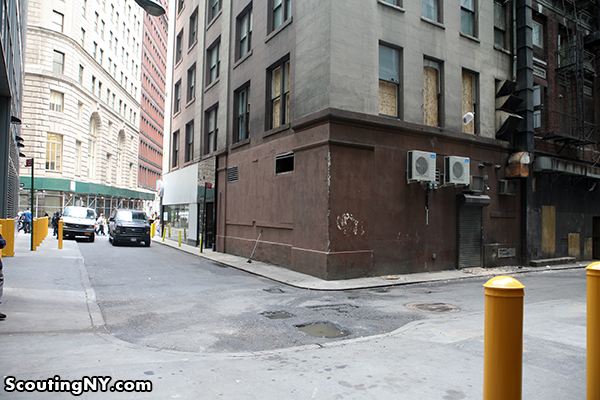
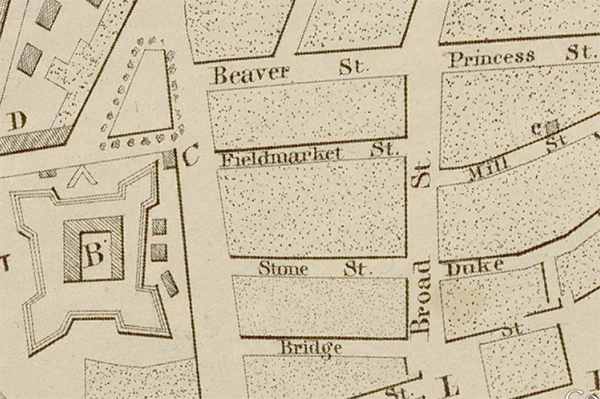

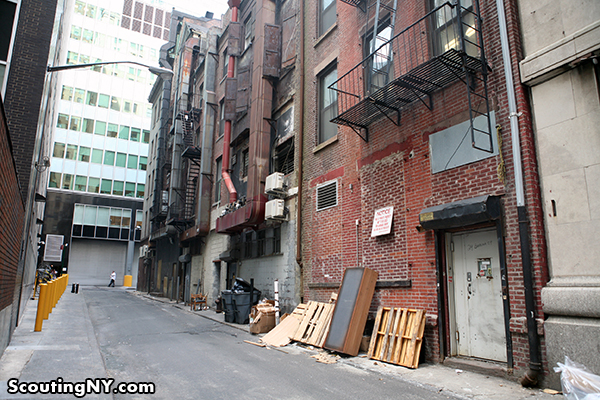

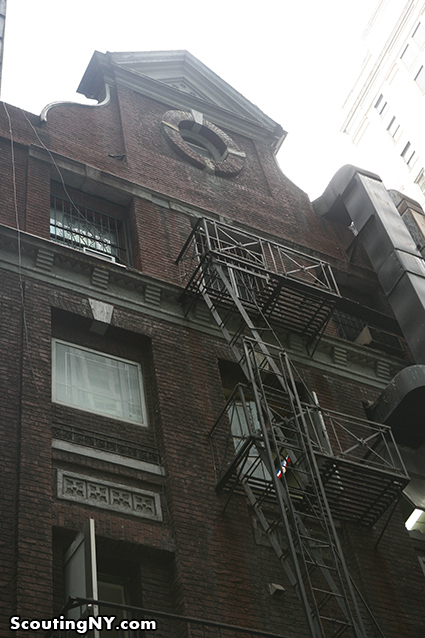
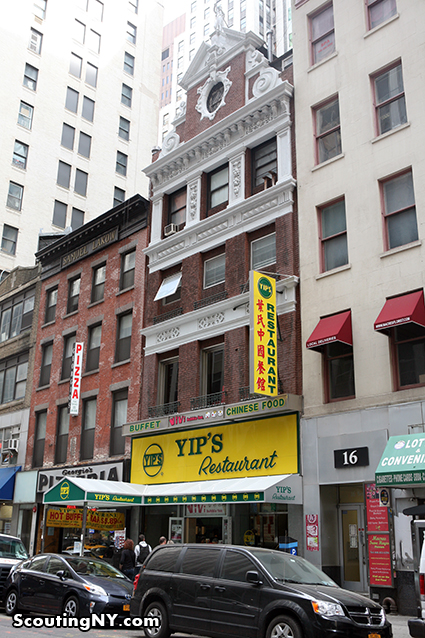
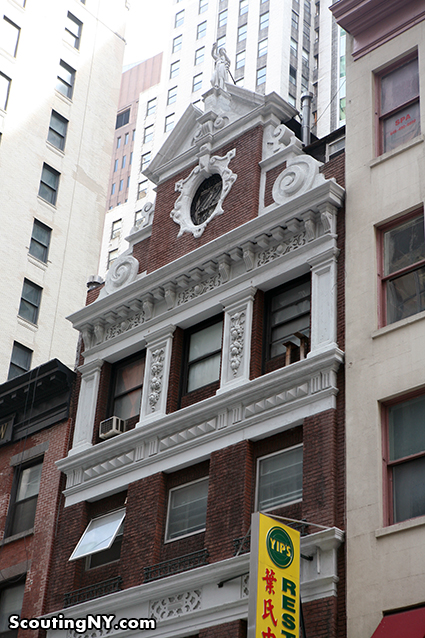

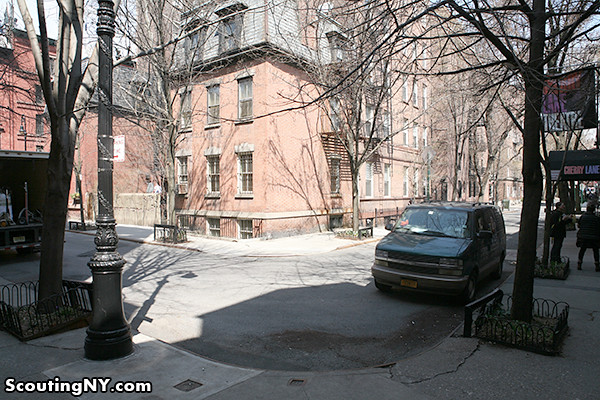
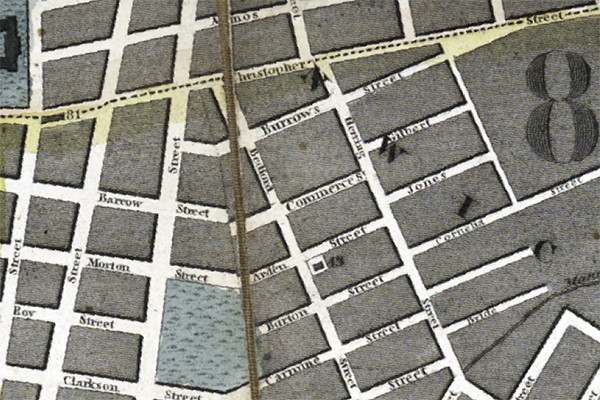

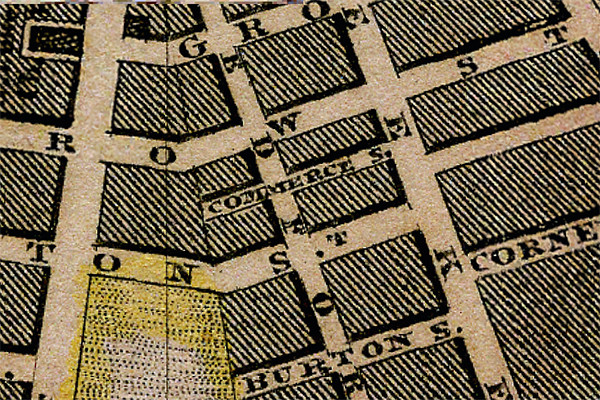

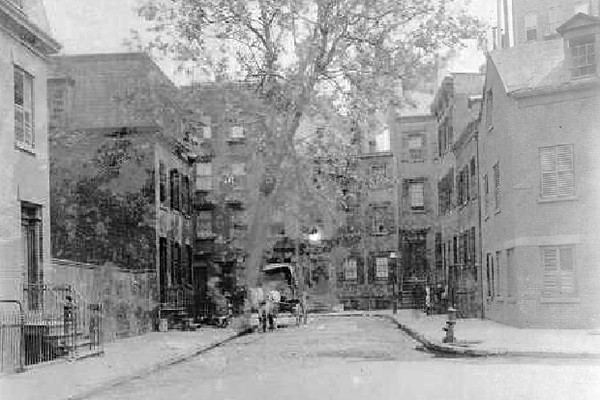
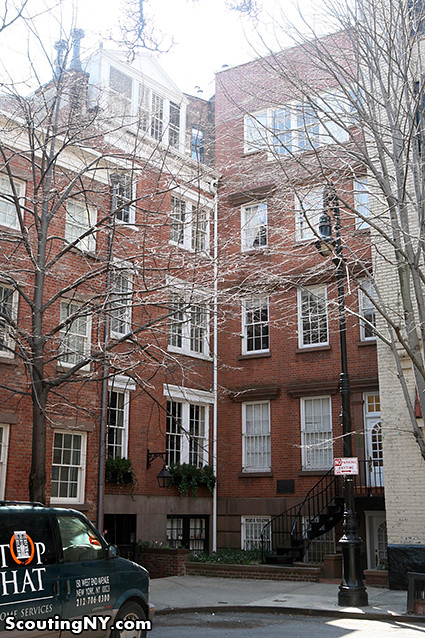

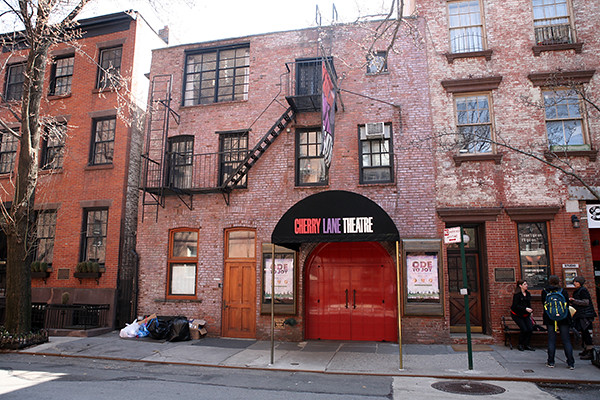
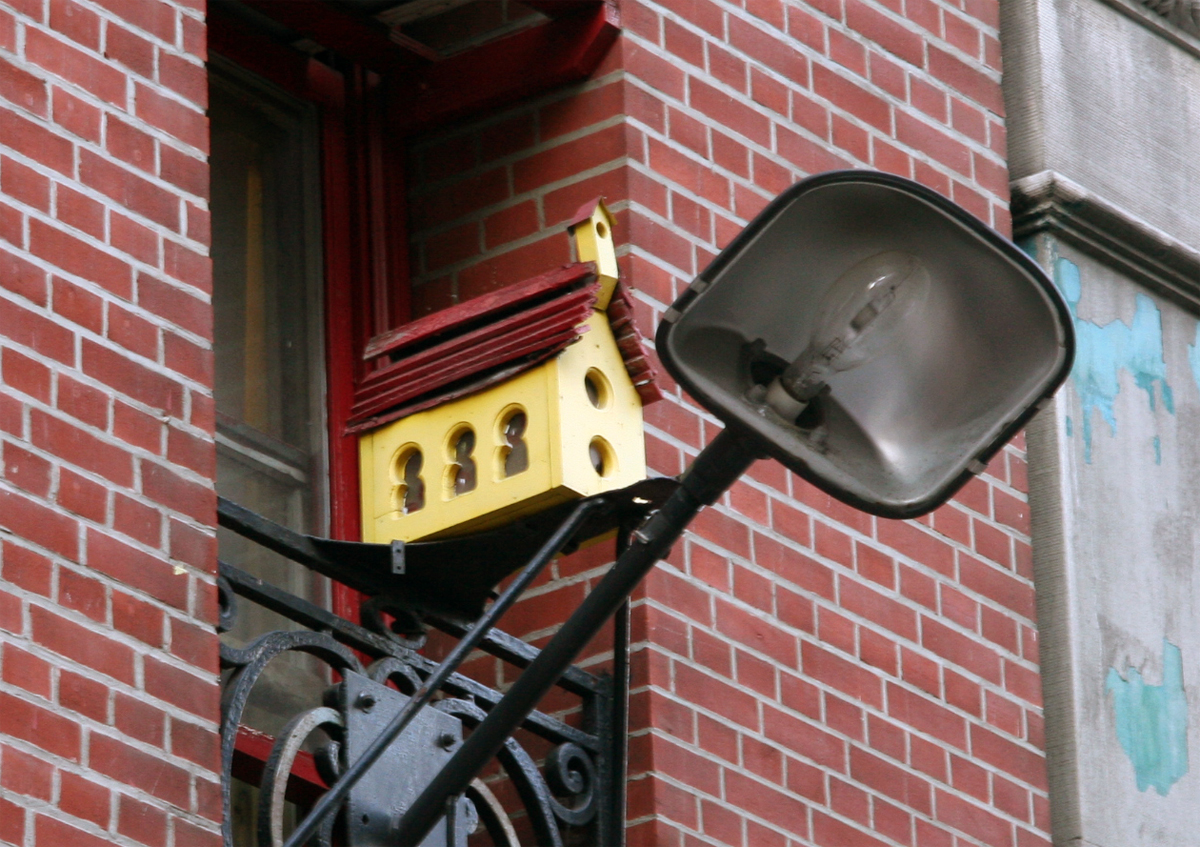
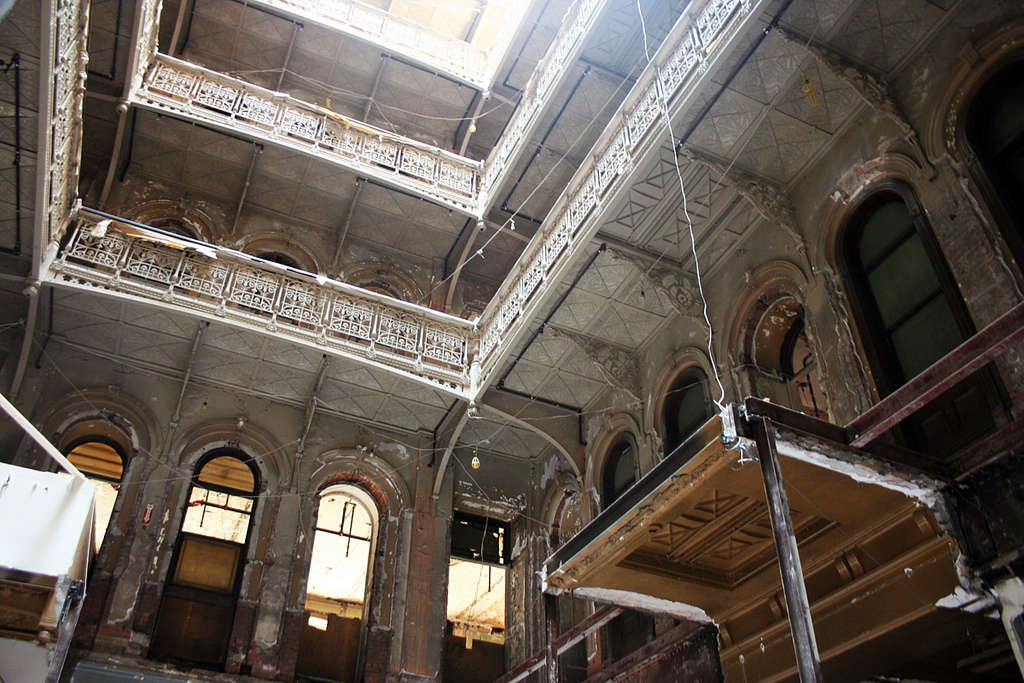
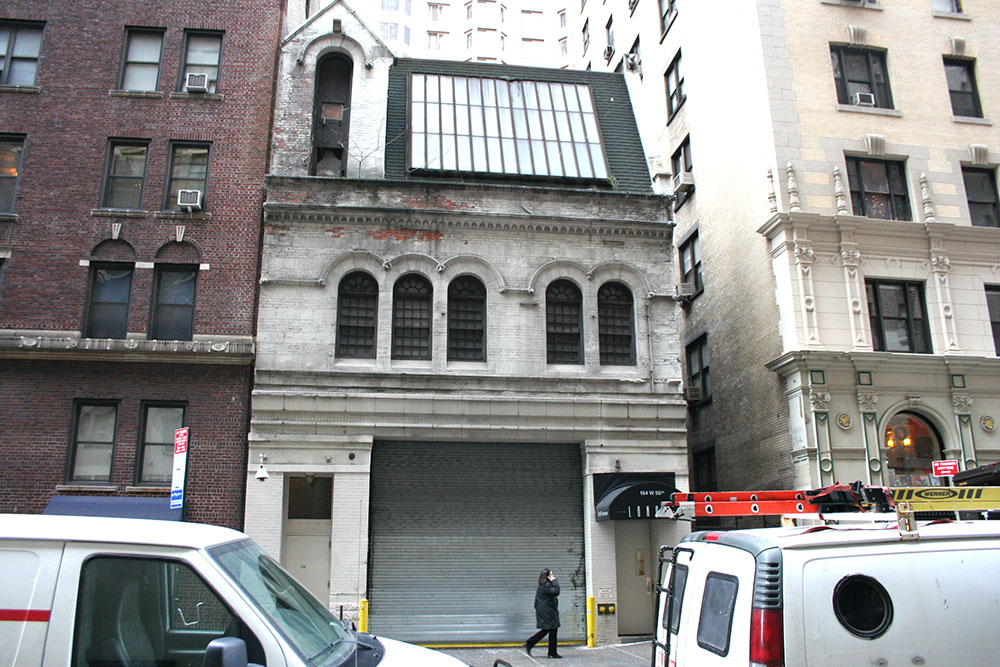
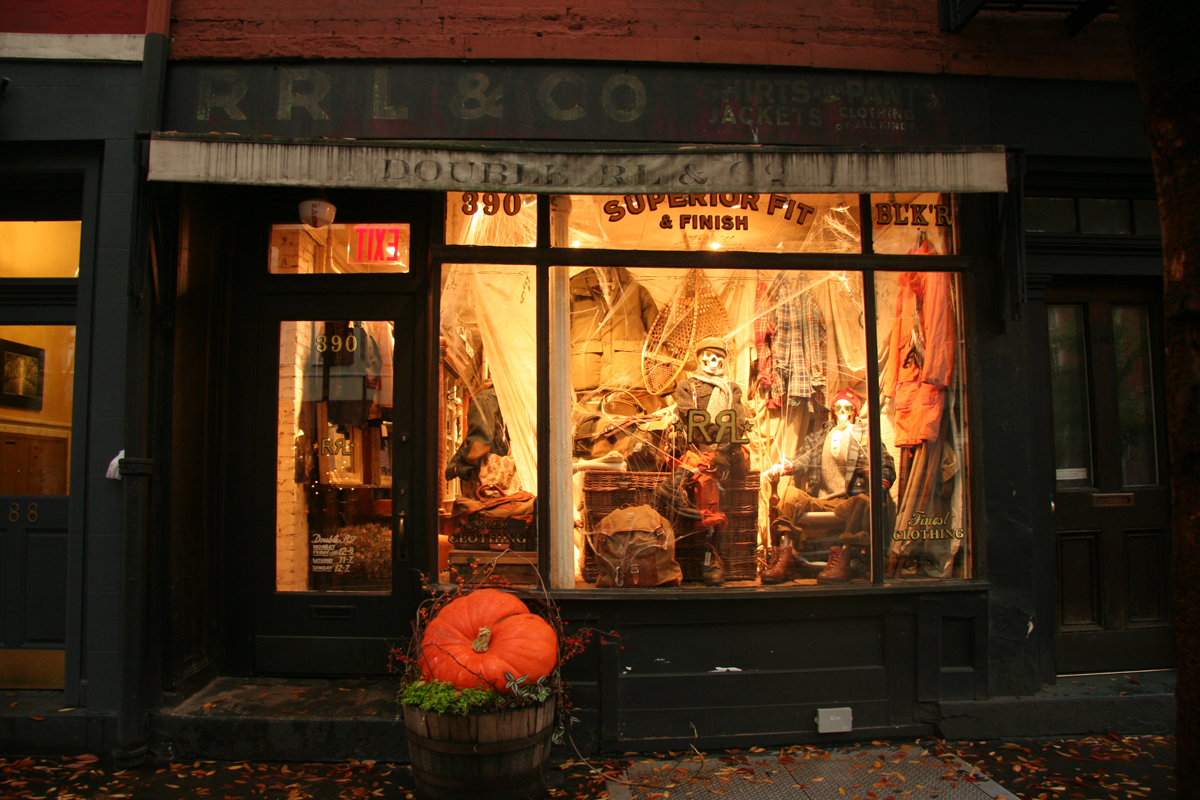
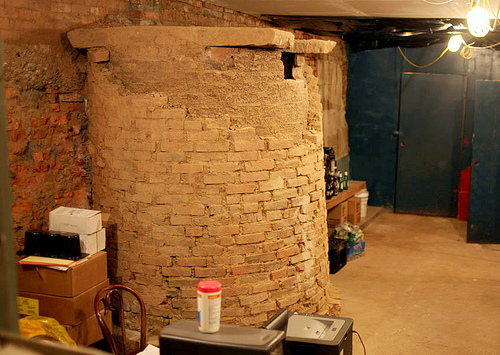

My favorite NYC anomaly is Waverly Place which does a “Y” shape at the Northern Dispensary.
How would you know which Waverly Place a specific building number is on?
Waverly is the only street in the world that crosses itself.
The Dispensary is such a great building.
Does the L-shaped bend at Riverside Drive between 155 and 156 count? — and then again at 158th street & Riverside?
You forgot about Hamilton Terrace which starts at 141st and then goes for three blocks and makes a sharp left into Convent Avenue
Carlton
http://www.laptopriches.com
Two separate streets – Hamilton Terrace intersects with W 144th Street (ie it’s not its own street).
doyers?
Doyers isn’t curved enough – it’s more similar to Gay or Minetta. But as I said above, nothing against Doyers Street, which is my favorite of New York’s crooked streets.
what about Doyers Street in Chinatown? maybe not quite as sharp of a curve, but pseudo-L-shaped…?
Was going to say Colonel Robert Magaw Pl in Washington Heights, but I looked at a map and realized half of it is W 183rd street.
There are a lot of other “almosts” in that neighborhood, 184th curving into Overlook Terrace, Cabrini curving into W 179th, W 186th and Chittenden, Overlook Terrace and 190th. Must be the hills.
I used to eat at Yips all the time when I worked on the NYSE.
What is on the plaque on the side of the building with the spiral staircase?
There’s also 144th street off Amsterdam ave. One of my favorite streets in Manhattan
Hi,
The old Dutch word Steegh can best be stranslated into alley.
It is fun to see how much is left from the real old New York or New Amsterdam as it was called before the Dutch sold it.
You could do a post on those things sometime.
Dutch
I second the idea for a post on what you can still scout out of New York when it was Nieuw Amsterdam, especially since one branch of my family tree helped start that tangle way downtown. ‘Marck,’ however, is not ‘old’ Dutch for ‘market’; that would be ‘markt,’ or possibly ‘marckt,’ but it definitely needs the ‘t’ its English cognate also has. Also, those Dutch forebears never sold off Nieuw Amsterdam: they lost it–twice!–to the Anglos (though in the one case it’s been argued they traded it away for Surinam).
Hi,
You are right, they lost it but in both cases there was some sort of trade off.
Anyway, lets see if Scout picks up the idea for a New Amsterdam post.
Start w/Niuw Utrect.
What a great post. When I was a little kid growing up in Park Slope my upstairs neighbor and best friend’s father owned and lived at #48 (probably still does) and we would go into the city and play in the house and out on Commerce. His dad Norm fully restored the building to its current glory (there is a plaque on the house commemorating the work). He had a room filled with early 20th Century arcade games. It was a child’s dream. Best block in NYC in my opinion.
Spent a nice morning several years ago shooting a movie on Marketfield. Very quiet and scenic in that abandoned-back-alley style.
What about 9th Ave at the very tip of Manhattan, where it turns left to connect with Broadway? (although that’s somewhat forced by running out of land…)
Does Indian Road in Inwood count? Also the only “road” in Manhattan, at least that’s what my real estate agent said.
What about Hamilton Terrace in Harlem’s Hamilton Heights which curves and becomes 144th Street? Very L-shaped…
https://www.google.com/maps/place/Hamilton+Terrace/@40.8217558,-73.9472376,17z/data=!3m1!4b1!4m2!3m1!1s0x89c2f67b3f445b27:0xb0e9d763c7371f05
How about Ryders Alley, connecting Fulton and Gold? Too small? First noticed it after reading Richard Sullivan’s terrific book about rats.
I think that somehow the way Park Ave splits and squares around Penn Station may fit into the “L turn/but still the same street category”
Hey Scout, clearly another street you should check out for C U R V E is Doyer Street in the heart of Chinatown (off of Pell.) Back in the eighties it was the location for my favorite Chinese restaurant. Haven’t been there in a while.
Hey Scout,
There is one more, although it’s not as interesting I’ll admit that! W 110th Street (aka Cathedral Parkway) bends very sharply to the right (a complete L) before it joins to Riverside Drive.
https://www.google.com/maps/place/Cathedral+Pkwy/@40.8053258,-73.9680342,19z/data=!3m1!4b1!4m2!3m1!1s0x89c2f63badb9da4d:0x37213c008e171c51
A couple of years ago, The Times ran an excellent, envy-inducing article about the tenants above the Cherry Lane Theater. The apartments are a fantastic rarity, as is the landlord:
http://www.nytimes.com/2012/01/24/nyregion/rent-controlled-paradise-above-a-greenwich-village-theater.html?_r=0
Two more possibilities: Broadway Terrace: right off Broadway above 190th St. in Manhattan, intersecting with 193rd and Broadway. Strong right-angle indicated on my paper map, google street, and on foot. Below that, a debatable 90 degrees off Overlook Terrace (nice view either way): take a left off Broadway above 181st. The street makes a sharp right just after Bennett Ave. Is it indeed the hills? Either way, it’s why I love this part of the city. thanks for your wonderful site.
Someone mentioned it earlier but Indian Road in Inwood is another, as is Payson Avenue in Inwood. Payson’s not a true 90 degree angle but it both intersects and runs parallel to Seaman Avenue.
I love Guernsey Street in Brooklyn that turns into Oak.
How about west 27th between 9th and 10th?
Anyone? Anyone? Bueller?
I picked this up when I taught taxi school in the 90’s: name six streets, all below 14 st, with only 3 letters in the name. I’ll start with Gay street. The rest are south of Canal. Yes, you in the checkered suit….